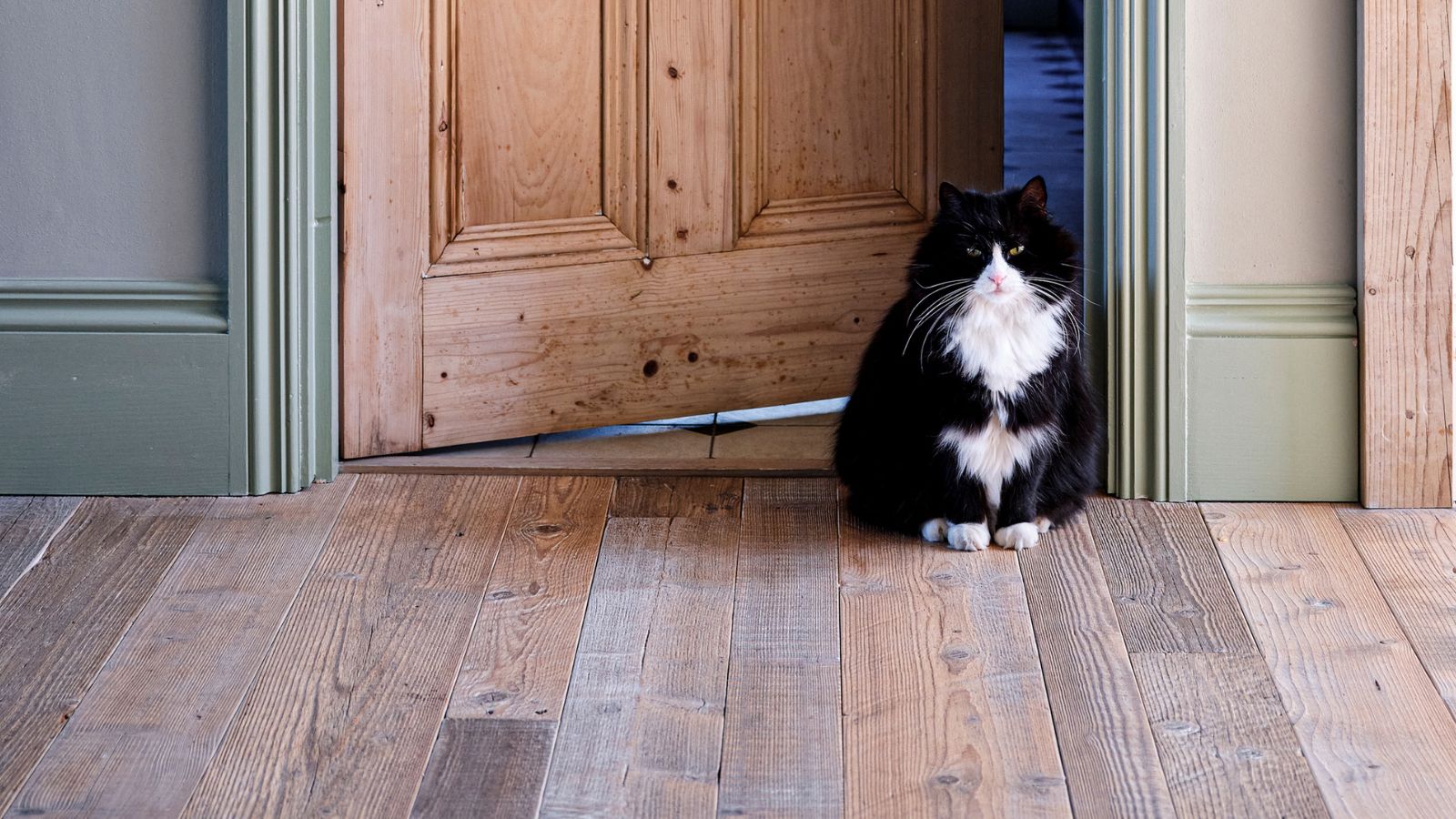Is waxing floors a good idea? Experts explain the pros and cons
To wax or not to wax? Flooring experts explain when hardwood can and should be waxed.


Waxing floors used to be a very common flooring maintenance step. However, if you’re reading this, you probably have never waxed yours but are wondering if you should try. Maybe your parent or grandparent used to refinish hardwood floors this way, but you are wondering whether all that effort is truly worth it.
Who can better tell whether waxing floors is a good idea than flooring experts? We’ve asked people who have worked with maintaining and replacing floors for decades: here’s what they told us.

Is waxing floors a good idea?
The answer is: yes, if you have a floor that can be waxed. That’s the main factor that will determine whether waxing floors is a good idea for you.
If you do have floors that can be waxed, then waxing is very beneficial indeed. We spoke to Sean O'Rourke, the National Director of Merchandising at Floor Coverings International. He has over 30 years of experience in the flooring industry and is unequivocally for waxing floors. As Sean explains, ‘Wax is a protective shield and minimizes the absorption of spills, preventing unwanted stains.’
Properly waxed floors need less maintenance overall than unwaxed ones. You likely will be able to get away with a quick sweep or mop-up in case you do spill something, rather than having to scrub your floor to get a stain out.
Overall, waxed floors ‘last longer than those without wax’ and look better. 'A quick buffing can restore the look of many dull or hazy hardwood floors’, says Sean. If you’ve ever wondered how someone’s vintage wood floor looks so shiny and bright, the answer is almost certainly that it’s waxed regularly.
Consistent and correct application is key. The payoff is a more resilient floor, which is what you need if your floor is exposed to heavy everyday use. According to Sean, ‘when applied correctly and at needed intervals, wax can actually harden and build up a great resistance to common household traffic.’
Design expertise in your inbox – from inspiring decorating ideas and beautiful celebrity homes to practical gardening advice and shopping round-ups.

Sean has over 30 years of experience in the Flooring Industry, with an extensive background in Hardwood, Laminate and Vinyl products. Since 2021 he has served as the National Director of Merchandising for Floor Coverings International, the leading full-service shop-at-home flooring franchise serving 40 states with over 270 Franchise locations.
How do I know if my floors can be waxed?
Generally speaking, only two flooring types are suitable for waxing: wood floors and linoleum. However, that only applies if your floor has not been finished with polyurethane. Polyurethane is a form of plastic and is now commonly used to finish floors instead of wax. You can’t wax a floor coated with polyurethane ‘because the wax finish won’t adhere correctly to the urethane’, explains Sean.
How do you know if your hard floors are polyurethane-coated? As a general rule, the advice is that ‘The vast majority (over 95%) of all pre-finished hardwood floors installed since 1990 are almost definitely a urethane finish and perhaps 50% of job-site hardwood installed floors are also urethane.’ If you live in an old house that has original wood or lino floors, they likely aren’t coated.
If you have vinyl floors, they almost invariably be polyurethane-coated, unless you have VCT (Vinyl Composition Tile) floors, which is unlikely since they are ‘traditionally installed in schools, institutional type buildings and large department type stores like Target and Kohls.'
If you’ve recently moved into a house with wood floors and you have no way of determining when they were installed, you can test for the polyurethane coating yourself. The best way to do this is to scrape an inconspicuous floorboard with a sharp knife such as a utility knife. If scraping produces clear shavings, you have a coating that’s either polyurethane or shellac. Shellac dissolves in alcohol, so dropping a small amount on the shavings will tell you which type of coating you have.
Waxed floors can be identified by gently scraping a small area with a coin. Wax has a telltale texture and feel between your fingers, and you’ll easily be able to tell the difference between wax and polyurethane.
Note that if your floors already have a wax coating, you’ll need to strip them before refinishing.
If you have linoleum floors that ‘don't seem to ever get clean’, they were ‘most likely waxed and need to be stripped and re-waxed’, says Matthew Baratta, cleaning expert and VP of Operations at Daimer Industries. The best way to strip a waxed linoleum floor is by using ammonia, and you will need to ‘make sure the area is very well-ventilated.’

Matthew Baratta is a cleaning expert and VP of Operations at Daimer Industries. Daimer is an advanced industrial cleaning equipment company. They were the first to introduce rugged commercial and industrial vapor steam cleaners and steam vacuum cleaners in North America.

I’m replacing my floors: should I get uncoated or coated flooring?
If you’re renovating and replacing an old floor, you may be wondering if it’s worth installing an uncoated wood floor and then periodically waxing it. Traditional wood flooring is very popular right now, so it’s easy to see the appeal of an all-natural wood floor.
Matthew Baratta recommends really thinking this one through before making a decision. He admits that waxed wooden floors ‘look great’, but bear in mind that you’ll need to wax them every 18 months, which can be ‘a pain’. By contrast, ‘a urethane-finished floor can last more than a decade and is a more common and far less maintenance-intensive option.’ Matthew himself used a water-based urethane on my hardwood floors and tells us he loves it.
Be honest with yourself: are you prepared to wax your floors every 18 months? If not, just go with urethane-coated floors.
What are the disadvantages of waxing floors?
Although waxing floors that can be waxed is generally very beneficial, there are few downsides. Depending on the type of wax you choose it can be difficult to apply. This is especially true of solid wax, but mistakes are possible with liquid wax products too. Sean cautions that if applied incorrectly, floor wax may change the hue of your flooring.
Learning to wax floors may take a bit of time and patience, although once again it’s worth saying that modern waxing products are easier to apply than traditional solid wax.
Floor wax also has a characteristic aroma some people may find unpleasant.
Even with these drawbacks, waxing your hardwood floor is well worth the extra effort. It protects and prolongs the lifespan of your floor and gives it a well-conditioned look. Just make sure you know what type of floor your have and whether it’s been poly-coated before you attempt waxing.

Anna is a professional writer and academic. She taught English Literature for several years before joining Future where she wrote for Real Homes, Homes & Gardens and Livingetc for four years. She is a regular contributor for Parade Home, BiggerPockets, and many other publications. In her spare time, Anna enjoys hiking and gardening.
